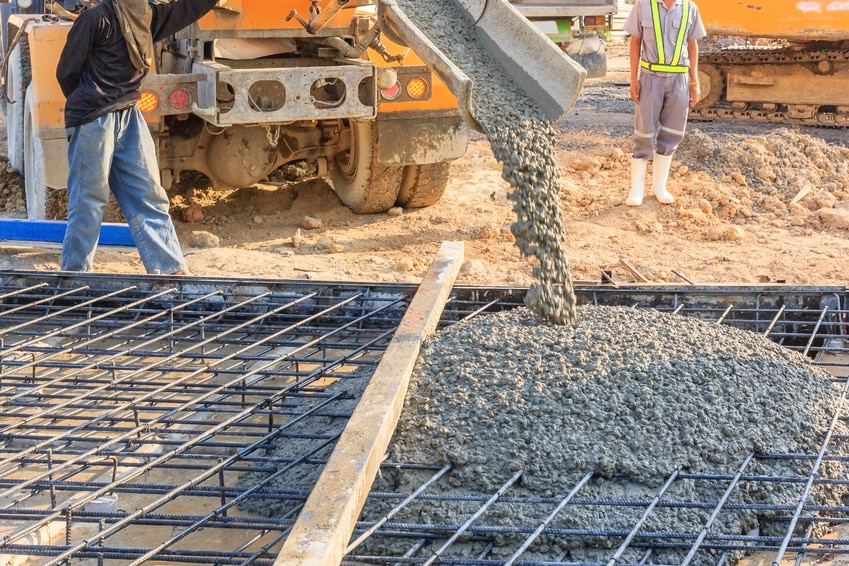Concrete retaining walls are a popular choice for many homeowners in Richardson, TX, as they provide stability and aesthetic appeal to their properties. However, like any other structure, these walls can experience common problems that need to be addressed in order to maintain their integrity and functionality. In this article, we will discuss some of the most common issues that arise with concrete retaining walls in Richardson, TX, and provide practical solutions to address them.
One of the most common problems with concrete retaining walls in Richardson, TX, is cracking. Cracks can occur due to a variety of reasons, such as temperature changes, soil movement, or inadequate construction. These cracks not only compromise the structural integrity of the wall but also allow water to seep in, leading to further damage. It is essential to understand the causes of cracking and implement effective solutions to prevent further deterioration.
When it comes to maintaining the strength and durability of concrete retaining walls in Richardson, TX, homeowners can rely on the expertise of Reef Concrete Contractor Richardson. By directly addressing these concerns, they ensure that their retaining walls will stand strong for years to come. With the Best Concrete Contractors in town, homeowners can enjoy peace of mind knowing that their walls are in good hands. So, say goodbye to worries and hello to a long-lasting and reliable concrete retaining wall.

Understanding the Causes of Cracking in Concrete Retaining Walls
To understand why your concrete retaining walls in Richardson, TX are cracking, you need to visualize the various causes and how they affect the structural integrity. One common cause of cracking is shrinkage. As concrete cures and dries, it undergoes a process called shrinkage. This shrinkage can lead to cracks forming in the walls. Another cause of cracking is excessive pressure or loading. Retaining walls are designed to withstand the lateral pressure from the soil behind them. However, if the pressure becomes too great, it can cause the walls to crack.
In addition to shrinkage and excessive pressure, another cause of cracking in concrete retaining walls is poor construction practices. If the walls were not properly reinforced or if the concrete mix was not properly proportioned, it can weaken the structure and make it more prone to cracking. Additionally, inadequate drainage can also contribute to cracking. If water is not able to properly drain away from the walls, it can lead to a buildup of pressure and cause the walls to crack. By understanding these causes, you can better address the common problems with concrete retaining walls in Richardson, TX and take appropriate measures to prevent or repair cracks.
Effective Solutions for Leaning Retaining Walls
Fixing leaning retaining walls is simple and straightforward – just reinforce them with additional support to ensure stability and prevent further damage. One effective solution is to install vertical steel beams or pilasters along the length of the wall. These beams are usually placed at regular intervals and are anchored deep into the ground to provide extra support and prevent the wall from leaning further. Additionally, installing horizontal steel reinforcement bars, also known as rebar, within the concrete can help strengthen the retaining wall and prevent it from leaning. These bars are typically placed in a grid pattern and are embedded within the concrete during construction. They provide added strength and stability to the wall, minimizing the chances of it leaning or cracking.
Another solution for leaning retaining walls is to use geogrids or geotextiles. These materials are made from synthetic fibers and are placed horizontally within the soil behind the retaining wall. Geogrids and geotextiles help distribute the pressure and forces exerted by the soil, reducing the chances of the wall leaning or bulging. They also improve the overall stability of the retaining wall by increasing the friction between the soil and the wall. In some cases, it may be necessary to excavate behind the wall and install additional drainage systems to prevent water from accumulating and causing further damage. By addressing the underlying causes of the leaning, such as poor drainage or inadequate reinforcement, these solutions can effectively stabilize leaning retaining walls and prevent future problems.
Preventing and Repairing Water Damage in Concrete Retaining Walls
By properly maintaining and waterproofing your concrete retaining walls, you can prevent costly water damage and ensure the longevity of your structures. Water damage is a common problem that affects concrete retaining walls, especially in areas with heavy rainfall like Richardson, TX. When water seeps into the concrete, it can weaken the structure and cause cracks, leaks, and even collapse over time. To prevent water damage, it is important to regularly inspect your retaining walls for any signs of moisture or water penetration. If you notice any cracks or leaks, they should be repaired immediately to prevent further damage. Additionally, applying a waterproofing sealant to the walls can help protect them from water infiltration and prolong their lifespan.
In the event that your concrete retaining walls have already been damaged by water, it is crucial to address the issue promptly to prevent further deterioration. First, you should identify the source of the water problem. It could be caused by poor drainage, inadequate waterproofing, or even a faulty irrigation system. Once the source is identified and fixed, the next step is to repair the damage. This may involve filling in cracks or holes with a suitable concrete patching material and applying a waterproofing membrane or coating to prevent future water infiltration. It is important to consult with a professional contractor who specializes in concrete retaining walls to ensure that the repairs are done correctly and effectively. By taking these preventive and repair measures, you can protect your concrete retaining walls from water damage and extend their lifespan.
Reinforcement Techniques for Stronger Retaining Walls
Reinforcing techniques help create stronger retaining walls, ensuring their stability and durability. One commonly used reinforcement technique is the addition of steel bars, also known as rebar, within the concrete structure. Rebar acts as a skeleton for the concrete, providing additional strength and resistance to external forces. By strategically placing rebar throughout the retaining wall, it can effectively distribute and withstand the pressure caused by soil and water behind it. This helps prevent cracking or collapsing, especially in areas with high water tables or heavy rainfall.
Another reinforcement technique for stronger retaining walls is the use of geogrids. Geogrids are synthetic materials that are installed within the soil backfill behind the retaining wall. These materials have a grid-like structure that helps distribute tension forces and improve the overall stability of the structure. Geogrids are particularly useful in situations where the soil is loose or unstable, providing additional support and preventing soil movement. The installation process involves placing layers of geogrids at specific intervals, ensuring they are securely anchored into the soil. This reinforcement technique helps increase the retaining wall’s resistance to lateral forces, enhancing its longevity and performance.
Reinforcing retaining walls with techniques such as rebar and geogrids can significantly improve their strength and durability. These techniques help distribute external forces, such as soil pressure and water, more effectively, preventing damage and ensuring the stability of the structure. Whether dealing with loose or unstable soil, or facing high water tables, these reinforcement techniques provide an extra layer of protection for retaining walls in Richardson, TX.
Maintenance Tips for Long-lasting Concrete Retaining Walls in Richardson, TX
To ensure long-lasting concrete retaining walls in Richardson, TX, it is essential to regularly inspect and maintain them. One important maintenance tip is to check for any signs of cracking or deterioration. Small cracks can develop over time due to natural settlement or changes in temperature, but it’s important to address them promptly before they become larger and more problematic. Filling these cracks with an appropriate concrete repair product can help prevent further damage and maintain the structural integrity of the retaining walls.
In addition to addressing cracks, it is also important to keep the retaining walls clean and free from debris. Leaves, dirt, and other debris can accumulate on the walls, which can promote the growth of algae or moss. These organisms can cause the walls to become slippery and increase the risk of accidents. Regularly cleaning the walls with a mild detergent and a soft brush can help remove any dirt or growth and prevent these issues. It is also important to inspect the drainage system of the retaining walls to ensure that water is properly diverted away from the structure. Poor drainage can lead to water buildup behind the walls, which can cause pressure and potential damage. By keeping the walls clean and ensuring proper drainage, you can extend the lifespan of your concrete retaining walls in Richardson, TX.
Frequently Asked Questions
How much does it cost to repair a cracked concrete retaining wall in Richardson, TX?
The cost to repair a cracked concrete retaining wall in Richardson, TX can vary depending on the extent of the damage. It is best to consult with a professional contractor for an accurate estimate.
Are there any regulations or permits required for building or repairing a concrete retaining wall in Richardson, TX?
There are regulations and permits required for building or repairing a concrete retaining wall in Richardson, TX. It is important to check with the local building department for specific requirements and to ensure compliance with codes and regulations.
What are the signs that indicate a concrete retaining wall in Richardson, TX needs immediate repair?
Signs that indicate a concrete retaining wall in Richardson, TX needs immediate repair include: cracks, bulges, leaning, or shifting. These issues can compromise the wall’s stability and should be addressed promptly to prevent further damage or failure.
Can I use any type of paint or coating to protect my concrete retaining wall in Richardson, TX from water damage?
No, not just any type of paint or coating can effectively protect a concrete retaining wall in Richardson, TX from water damage. It is important to use a specifically designed waterproofing product for optimal results.
Is it possible to add decorative elements to a concrete retaining wall in Richardson, TX without compromising its structural integrity?
Yes, it is possible to add decorative elements to a concrete retaining wall in Richardson, TX without compromising its structural integrity. This can be achieved by using materials and techniques specifically designed for enhancing the aesthetics of the wall.
Conclusion
In conclusion, addressing common problems with concrete retaining walls in Richardson, TX is crucial for maintaining their structural integrity and ensuring their longevity. By understanding the causes of cracking, leaning, and water damage, homeowners can implement effective solutions to prevent further deterioration. Reinforcement techniques, such as using steel bars and proper drainage systems, can greatly enhance the strength and stability of retaining walls. Additionally, regular maintenance, including inspecting for damage, cleaning, and sealing, is essential for the long-lasting performance of these structures. By following these guidelines, homeowners in Richardson, TX can enjoy durable and reliable concrete retaining walls for years to come.
